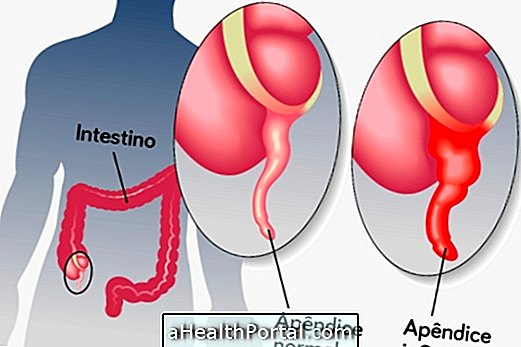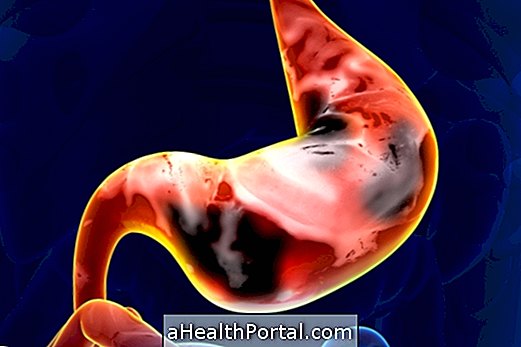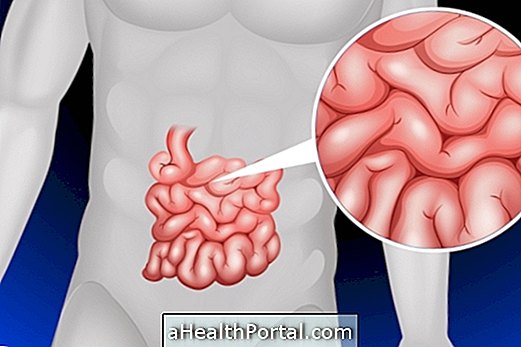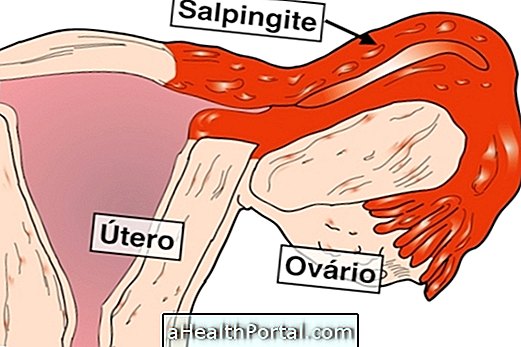Appendicitis is an inflammation of the appendix that causes severe pain in the lower right side of the abdomen, along with vomiting, fever, feeling sick and lack of appetite. The appendix is an organ located on the right side of the belly, which has a direct connection to the intestine and usually ignites when there is feces entering the intestine due to the overgrowth of bacteria.
To treat this problem, the appendix should be removed as soon as possible through surgery indicated by the doctor, to avoid more serious complications such as peritonitis. Thus, if appendicitis is suspected, it is very important to go to the hospital to confirm the diagnosis.

How To Identify Appendicitis Symptoms
If you think you may have appendicitis, select your symptoms from the list of the most common signs to find out what your chances are:
- 1. Abdominal pain or discomfort Yes No
- 2. Severe pain in the lower right side of the belly Yes No
- 3. Nausea or vomiting Yes No
- 4. Loss of appetite Yes No
- 5. Persistent low fever (between 37.5º and 38º) Yes No
- 6. General malaise Yes No
- 7. Constipation or diarrhea Yes No
- 8. Swollen belly or excess gas Yes No

These symptoms are more common in children and adolescents, but acute appendicitis can occur at any age.
In addition, when the pain lasts for more than a month it is considered chronic appendicitis and is more common from the 40 years of age, happening slowly and that can decrease with taking analgesics and anti-inflammatories. To learn more about the symptoms read: How to know if it is appendicitis.
What tests to detect
The diagnosis of appendicitis is usually made by the doctor through palpation and evaluation of the referred symptoms. However, to confirm the diagnosis the doctor may also ask for some tests such as:
- Blood test : allows to evaluate the amount of white cells, which help confirm the presence of inflammation in the body;
- Urine test : helps confirm that the symptoms are not being caused by a urinary tract infection;
- Abdominal ultrasound or computed tomography : allow to observe the dilation and inflammation of the appendix.
A good way to try to find out at home if it can be an appendicitis situation is to lie on your belly up and then press with one hand on the lower right side on the belly. Then the pressure must be rapidly relieved. If the pain is more intense, there is a good chance of being appendicitis, since if the pain does not change, it may be a sign of another problem. However, it is always important to go to the hospital to identify what is happening and start the appropriate treatment.
Causes of appendicitis
One of the most common causes of appendicitis most common is the entry of feces into the appendix or direct trauma into the appendix, causing it to rupture or preventing blood flow in the site.

Read more details on the causes and diagnosis of appendicitis.
When to do surgery
Surgery for appendicitis, called appendectomy, is the only form of treatment and the inflamed appendix is removed through a small cut in the abdomen, and therefore the individual usually stays for about 2 days until the pain subsides. Here's how the surgery is done in: Surgery for appendicitis.
If the appendix is not removed, it may rupture, known as suppurative appendicitis, increasing the possibility of releasing bacteria into the abdomen and leading to the occurrence of peritonitis and formation of abscesses in the abdomen, for example.
Having appendicitis in pregnancy is dangerous
It is dangerous to have appendicitis in pregnancy because the appendix can rupture by spreading bacteria into the abdomen that can cause serious infections for the mother and the baby.
Appendicitis in pregnancy presents the same symptoms and surgery is also the only treatment option, not being detrimental to the development of the baby.
In this way, it is very important that the pregnant woman to feel intense and continuous pain on the right side of the abdomen immediately go to the hospital to make the diagnosis and perform the surgery. Learn about the risks of appendicitis in pregnancy.
























